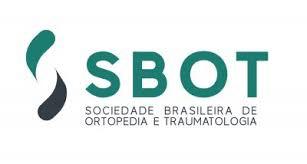| Chung et al. (2020)15
|
Assessment of Anatomic Restoration of Distal Radius Fractures Among Older Adults: A Secondary Analysis of a Randomized Clinical Trial |
Data of 166 patients analyzed with 2-phase multivariable regression models only 2 of the 84 correlation coefficients calculated were statistically significant; grip strength with radial inclination and MHQ ADL score with ulnar variance. |
They conclude that precise restoration of the wrist anatomy is not associated with better functional outcome. |
| Kong et al. (2019)22
|
The Necessity of Restoration of Radiologic Parameters by Closed Reduction in Elderly Patients with Distal Radius Fractures |
0ut of 96 patients 75 (78.1%) got acceptable reduction and 21 (21.9%) got poor reduction. A significant correlation was found between ulnar positive variance with grip strength (r = 0.35, p= 0.03) and dorsal angulation with wrist flexion (r = 0.31, p= 0.02) |
They concluded that satisfactory reduction is the first choice as malalignment leads to decreased grip strengths, unsatisfactory appearance and certain limitation of wrist movements. |
| Finsen et al. (2013)10
|
The relationship between displacement and clinical outcome after distal radius (Colles) fracture |
Reviewed 260 patients. Though there exist a statistically significant association between functional and anatomical results by Bivariate analysis however multiple regression showed dorsal angulation, ulnar variance and radial inclination accounts only 11% of variability. |
They concluded that final radiological alignment of distal radius fracture has minor influence on clinical outcome of Colles fracture. |
| Arrora et al. (2011)19
|
A prospective randomized trial comparing nonoperative treatment with volar locking plate fixation for displaced and unstable distal radial fractures in patients sixty-five years of age and older |
Prospectively analyzed 73 patients the range of motion, the level of pain, and the Patient-Rated Wrist Evaluation (PRWE) and Disabilities of the Arm, Shoulder and Hand (DASH) scores were not different between the operative and nonoperative treatment groups |
Thus achieving anatomic reconstruction did not convey any improvement in range of motion or better ability of daily leaving activities in elderly. |
| Anzarut et al. (2004)20
|
Radiologic and patient-reported functional outcomes in an elderly cohort with conservatively treated distal radius fractures |
Out of 74 patients 47 (69%) had acceptable radiographic outcome and 44 (59%) had satisfied functional result at 6 months. |
Concluded that acceptable radiographic reduction was not associated with better functional outcome. |
| Young and Rayan et al. (2000)21
|
Outcome following nonoperative treatment of displaced distal radius fractures in low-demand patients older than 60 years |
Got 88% excellent or good functional results and 68% excellent or good anatomical results |
Radiographic outcome did not correlate with the functional outcome. |
| Slogaard et al. (1988)23
|
Function after distal radius fracture |
Functional results were excellent or good with dorsal angulation below 10° and loss of radial height < 7 mm. |
Function was influenced by radiographic results. It is rational to improve the function results by better reduction technique of the fracture and prevention of secondary displacements. |
| Jenkins et al. (1988)24
|
Mal-union and dysfunction-in Colles fracture |
Results of 61patients. The anatomical parameters at union were: mean dorsal angulation of 9° (SD 12.1), mean loss of radial inclination 7.8° (SD 7.2°) and mean radial shortening of 4 mm (SD 3.9 mm). Loss of grip strength and loss of flexion were taken as the functional parameter. A multilinear regression analysis showed statistically significant correlation between grip strength and loss of radial inclination and dorsal angulation and same with loss of flexion but did not reach level of significance. |
Final recovery of the grip strength was related to the inclination of the articulate surface of healed radius both coronal and sagittal plane. Loss of radial length appears to become important determinant of long-term pain. |
| Garland and Werely (1951)6
|
Evaluation of healed Colles fractures |
Good functional results (68.3%) achieved despite of poor radiological appearances. |
The residual dorsal tilt more strongly associated with poor outcome than the loss of radial inclination or radial height or ulnar variance. However Cases showing more accurate reduction have best outcome. |
| Present study |
Determining the borderline values of anatomical parameters for better functional outcome of Colles fracture. A prospective study |
Of 70 patients excellent to good functional results was seen in 55 (78.55) and anatomically in 48 (68.5%) with a statistically significant correlation between them p< 0.001(0.0009) |
Concludes anatomical reduction and maintaining the reduction is priority for better functional outcome. |

 Determining the Borderline Anatomical Parameters for Better Functional Outcome of Colles Fracture: A Prospective Study
Determining the Borderline Anatomical Parameters for Better Functional Outcome of Colles Fracture: A Prospective Study Thumbnail
Thumbnail
 Thumbnail
Thumbnail
 Thumbnail
Thumbnail



